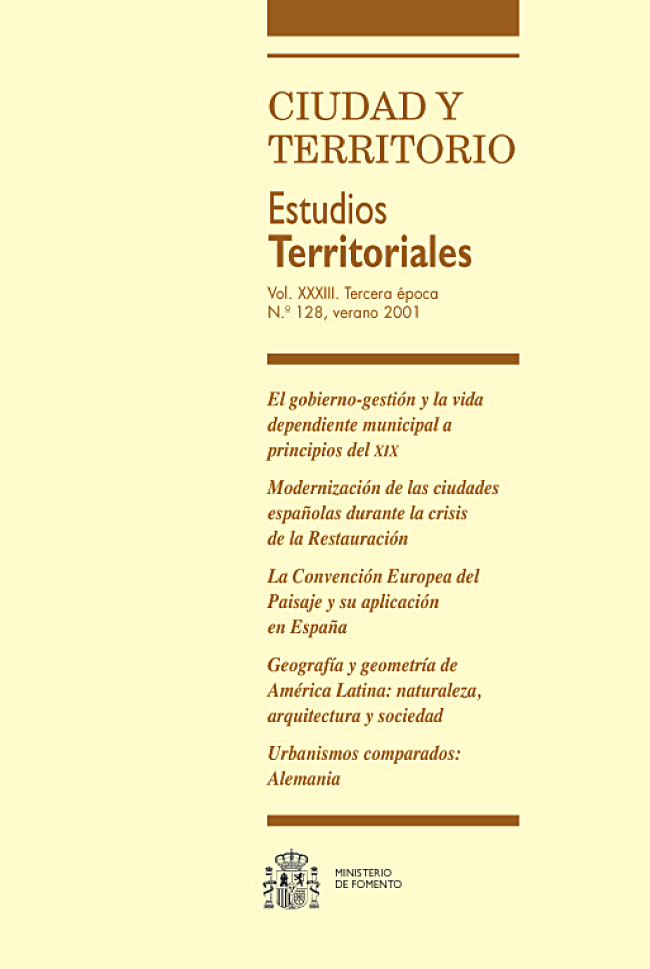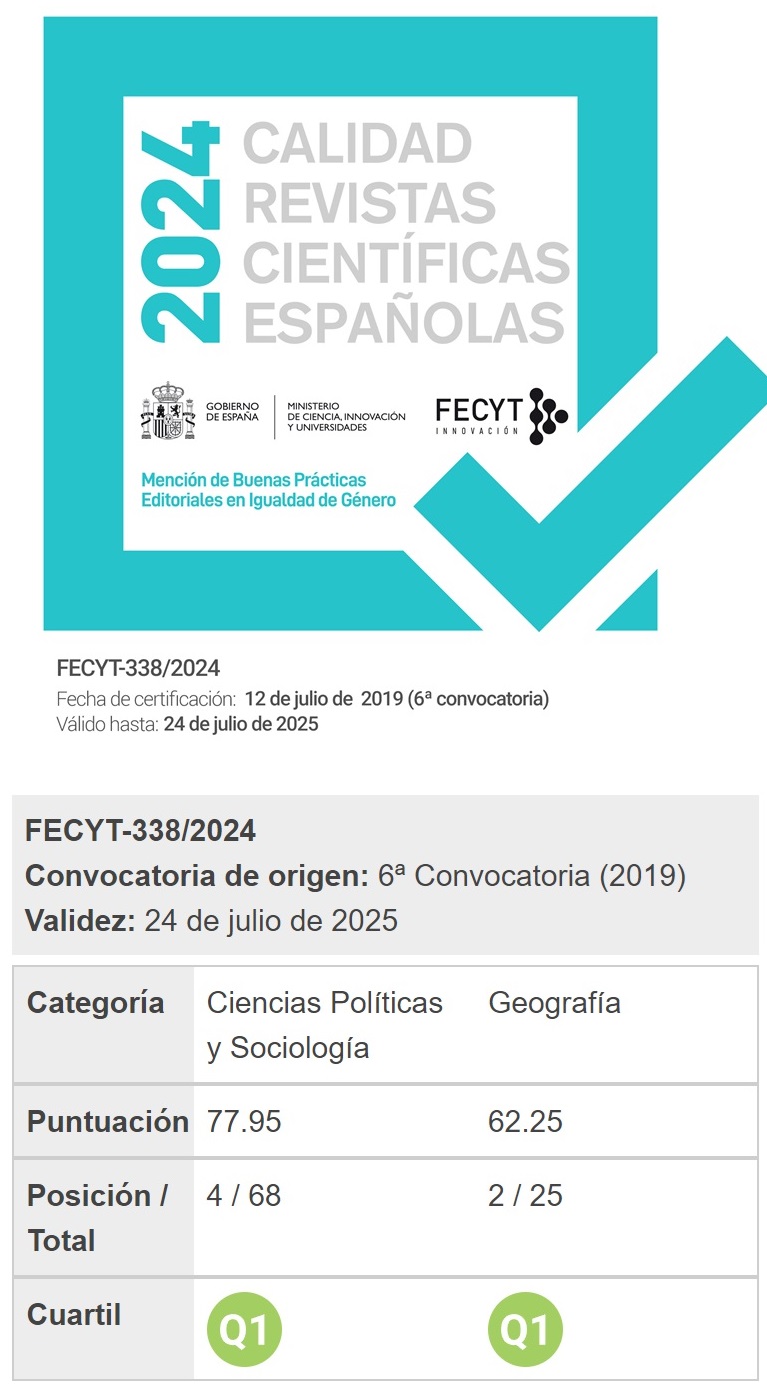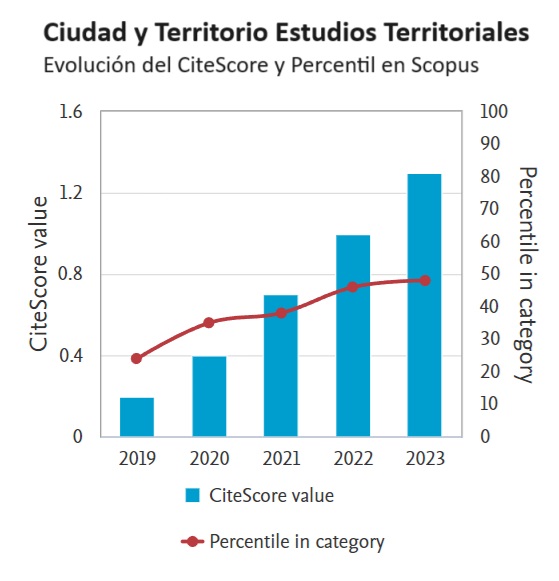El gobierno-gestión y la vida dependiente municipal a principios del XIX
Palabras clave:
Gestión urbanística, historia urbana, MadridResumen
El final del siglo XVIII y el principio del XIX supuso el inicio de la organización urbanística española.
Como todo comienzo resultó costoso y lento, pero el tiempo convirtió lo extraordinario en ordinario.
Ejemplo de esto fueron los problemas que suponía el aumento de la población por encima del número de casas
y habitaciones en la Villa de Madrid. Para resolver este problema, el poder Estatal designó que los Corregidores
y Alcaldes de Cuartel se encargaran de gobernar aspectos puntuales de la vida de la ciudad junto
con los que ya tenían encomendados. Esta manera de dirigir el urbanismo se le ha llamado
“Gobierno-Gestión” porque no existe una división de competencias entre lo que es la gestión del urbanismo
y la gestión de lo urbano. Así pues, tanto el Corregidor como el Alcalde de Cuartel estaban encargados de
atender cualquier asunto dentro de la ciudad por tener una competencia territorial. Para llegar a este planteamiento
se han seguido los ejemplos propuestos por la Novísima Recopilación y por estudiosos de este periodo,
con el fin de aproximarse al modo de dirigir la vida de la ciudad y de modo especial el urbanismo, que
fueron encargados a órganos ya existentes de la Administración.
Descargas
Descargas
Publicado
Cómo citar
Número
Sección
Licencia
Derechos de autor 2001 Carlos Bueno Aguado

Esta obra está bajo una licencia internacional Creative Commons Atribución-NoComercial-SinDerivadas 4.0.
Sin perjuicio de lo dispuesto en la legislación vigente sobre Propiedad Intelectual, y conforme a la misma, el/la los/las autor/a/es/as que publiquen en CyTET cede/n a título gratuito, de modo no exclusivo y sin límite temporal al Ministerio de Transportes, Movilidad y Agenda Urbana los derechos para difundir, reproducir, comunicar y distribuir en cualquier formato actual o futuro, en papel o electrónico, la versión original o derivada de su obra bajo licencia de Creative Commons Reconocimiento-NoComercial-SinObraDerivada 4.0 Internacional (CC BY-NC-ND 4.0), así como para incluir o ceder a terceros la inclusión de su contenido en índices, repositorios y bases de datos nacionales e internacionales, con referencia y reconocimiento en todo caso de la autoría del mismo.
Además, al realizar el envío, el/la los/las autor/a/es/as declara/n que se trata de un trabajo original en el que se reconocen las fuentes que han sido utilizadas en su estudio, comprometiéndose a respetar la evidencia científica y a no modificar los datos originales para verificar o refutar una hipótesis de partida; que el contenido esencial del mismo no ha sido publicado previamente ni se publicará en ninguna otra obra o revista mientras esté en proceso de evaluación en la revista CyTET; y que no se ha remitido simultáneamente a otra publicación.
Los autores deben firmar un Formulario de Cesión de Derechos, que les será enviado desde la Secretaría de CyTET una vez se acepte su artículo para ser publicado.
Con el objetivo de favorecer la difusión del conocimiento, CyTET se adhiere al movimiento de revistas de Open Access (OA) y entrega la totalidad de sus contenidos a diversos índices, repositorios y bases de datos nacionales e internacionales bajo este protocolo; por tanto, la remisión de un trabajo para ser publicado en la revista presupone la aceptación explícita por parte del autor/a de este método de distribución.
Se anima a las/os autoras/es a reproducir y alojar sus trabajos publicados en CyTET en repositorios institucionales, páginas web, etc. con la intención de contribuir a la mejora de la transferencia del conocimiento y de la citación de dichos trabajos.








 Enlace a CyTET en Linkedin
Enlace a CyTET en Linkedin